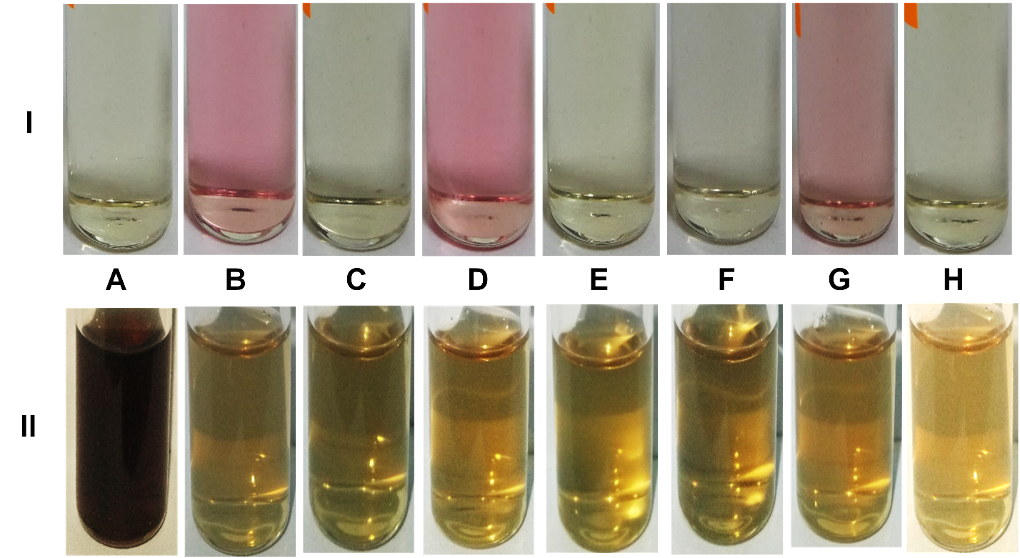VOLUME 14 (Supplement)

Philipp. Sci. Lett. 2021 14 (Supplement) 001-009
available online: May 21, 2021
*Corresponding author
Email Address: lcvillegas1@up.edu.ph
Date received: December 3, 2020
Date revised: February 3, 2021
Date accepted: February 24, 2021
ARTICLE
Characterization of Silver Nanoparticles Produced by Wildtype and Mutants Serratia marcescens Bizio
College of Arts and Sciences, University of the Philippines
Los Baños, Laguna 4031, Philippines
2Department of Animal Science and Technology,
Chung-Ang University, Anseong 17546, Republic of Korea
3Xerion Limited, Brighton, Victoria, Australia
Silver nanoparticles (AgNPs) are silver species characterized by their nanoscale size (< 100 nm) and antimicrobial properties with a broad spectrum of activity. Bacterial mediation demonstrates a rapid method of synthesis of AgNPs from silver nitrate precursors. In this study, the ability of wild-type and five mutant strains of Serratia marcescens to mediate the biosynthesis of AgNPs, and their antimicrobial activity against medically important bacteria and fungi were investigated. Cell-free culture supernatants of S. marcescens were used to produce AgNPs. Visual inspection of crude cell-free supernatants showed a color change from light yellow to light brown. UV-Vis absorption spectroscopy showed a peak absorbance at 360 – 380 nm, indicative of AgNO3 reduction. Similarly, the AgNP suspensions fluoresced at 380 – 400 nm under a fluorescence microscope. Scanning electron microscopy revealed the presence of spherical, monodispersed AgNPs with a size range of 11.71 – 23.20 nm (mean size = 17.05 nm; n = 20). The nanoparticles were identified as AgNPs based on energy dispersive X-ray analysis, where the mean silver content (% w/w) of the sample was 73.63%. The antimicrobial activity of biosynthesized AgNPs was tested against E. coli wildtype and mutant, Salmonella sp, Staphylococcus aureus, Bacillus megaterium, B. subtilis, Candida glabrata, C. albicans, C. parasilopsis, and Fusarium sp. via agar-well diffusion assay. Strong inhibitory activity was elicited by AgNPs against Gram-negative and Gram-positive bacteria, and yeast, and even stronger activity among drug-resistant strains.
© 2025 SciEnggJ
Philippine-American Academy of Science and Engineering